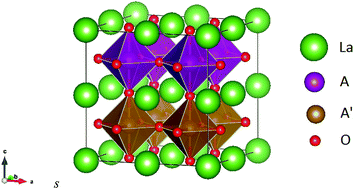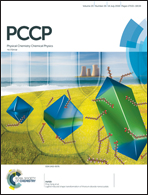Antisite-disorder engineering in La-based oxide heterostructures via oxygen vacancy control†
Abstract
It has been realized lately that disorder, primarily in the form of oxygen vacancies, cation stoichiometry, atomic inter-diffusion and antisite defects, has a major effect on the electronic and transport properties of a 2D electron liquid at oxide hetero-interfaces – the first and the last being the two key players. In order to delineate the roles of these two key factors, we have investigated the effect of oxygen vacancies on the antisite disorder at a large number of interfaces separating two La-based transition metal oxides, using density functional theory. The oxygen vacancy is found to suppress antisite disorder in some heterostructures thereby stabilizing the ordered structure, while in some others, it tends to favor disorder, opening up the possibility of using it to control the order. Our calculations show that the oxygen vacancy offers an opportunity to generate new magnetic states by manipulating the inter-site coupling. Moreover, it can be used to control the electrical transport. The oxygen vacancy and antisite disorder are intrinsic to oxide heterostructures and it is therefore incumbent to engineer the latter and tune the magnetic and transport properties by controlling the oxygen partial pressure during growth.



 Please wait while we load your content...
Please wait while we load your content...